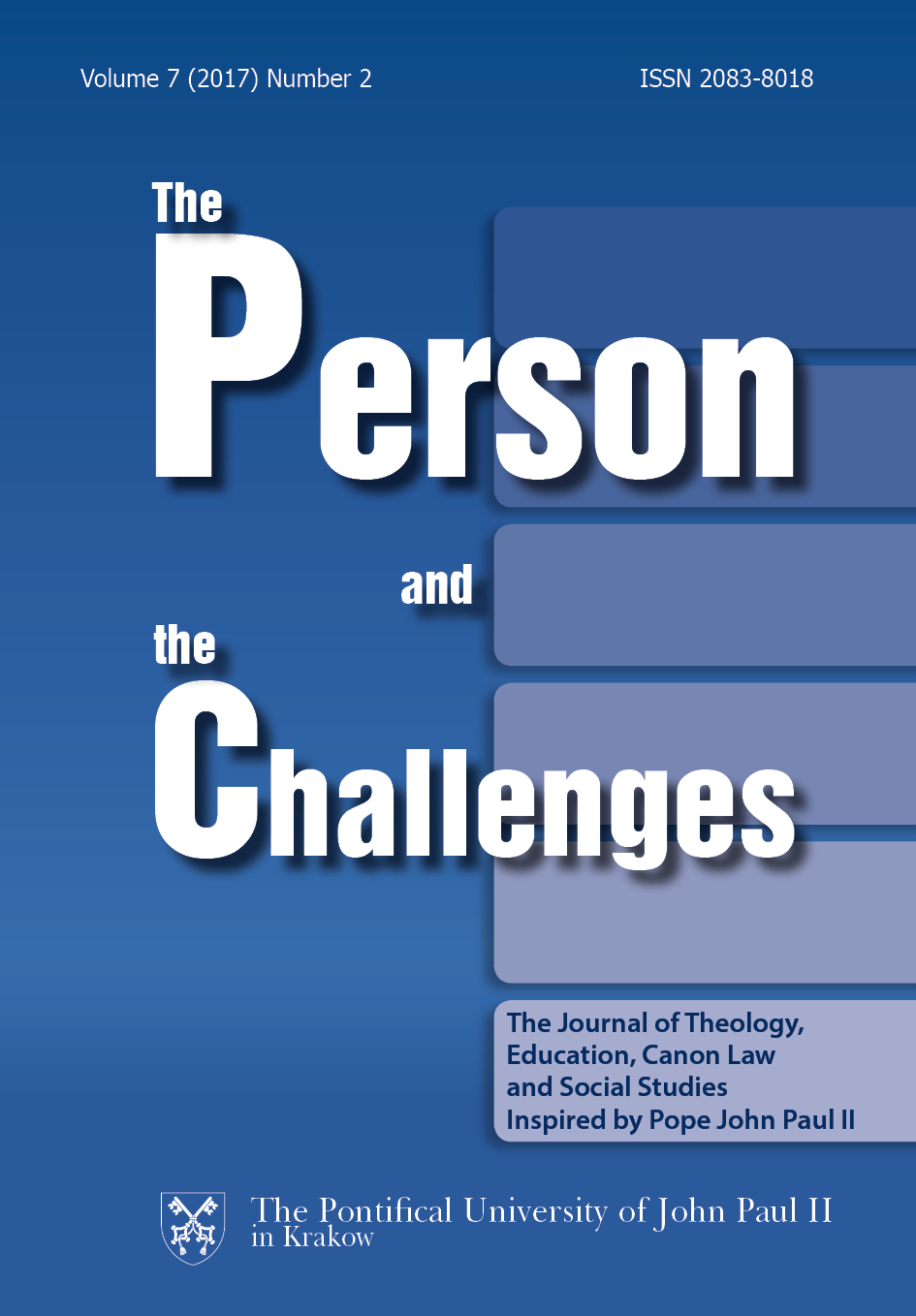Reform of the Vatican media, a difficult search for a new path
DOI:
https://doi.org/10.15633/pch.2179Słowa kluczowe:
Church, communication, dicastery, Dario Edoardo Viganò, media, Pope Francis, reform, Roman Curia, technological development, Vatican, Vatican RadioAbstrakt
Rapid technological changes, which are mainly the result of the progress in computer technology, in the last decades of the twentieth century, have touched every area of life and have enforced numerous innovations. Modern ways of communication and exchange of information, especially the development of social media, have led to a significant and complex transformation of the traditional media. Practically all media companies around the world, in order to maintain their position on the market, have had to make decisive modifications of their ways of working. On one hand they remained available to the users of traditional media, but on the other hand, they look for effective ways of reaching all those who are using only new ways. Similarly, the Vatican media could not remain indifferent to the issues mentioned above. For several years the Vatican has initiated a process of preparation for a general reform of its media institutions. However, these works have accelerated at a great rate during the pontificate of Pope Francis.The reform of the Vatican media is not an easy task. It concerns several independent institutions. Each one of them has their own history and way of announcing the Gospel. The widespread computerization, especially the development of the internet and social media, has also forced the Vatican to reflect on new ways of communicating. Among many questions, the most important were about the effectiveness of evangelization through the media, the ways of spreading the Pope’s message around the world to as many faithful as possible, and about the costs of necessary investments that would allow further, dynamic development and effective functioning of the Vatican media.
After the resignation of Pope Benedict XVI, the problems of the reform of the Roman Curia and the necessary savings were raised again during the discussions of the cardinals on the congregations preceding conclave. It became clear that the structural changes in the Vatican would be one of the challenges which would face the next successor of St. Peter. As from the very start of his pontificate, Pope Francis emphasized the necessity of the deep reform of the Roman Curia. The evaluation of the entire media structure of the Vatican was one of the first reforms to be tackled.
The reform of the Vatican media has already begun. In the Apostolic Letter as a Motu Proprio, published on June 27, 2015, Francis set up the new Vatican dicastery: The Secretariat for Communication. The plan of changes in the Vatican media prepares for the possibility of any difficulties and turbulences. A four‑year restructuring process was planned. The year 2015 was dedicated to the creation, elaboration and consolidation of the new Vatican media structure. And it really happened. During the next year, 2016, a common administration for the two major institutions which depended on the new dicastery: the Vatican Radio and the Vatican Television Center, was established. During the year 2017 a similar restructuring process is expected in the next four Vatican media institutions: the Vatican Printing Press, the Photo Service, “L’Osservatore Romano” and the Vatican Publishing House. The process of restructuring of the Vatican media is expected to be completed by the end of 2018. Many details of these changes are raising many questions and concerns, especially among the employees of existing media entities. However, the real questions concern the effectiveness of the new system.
Bibliografia
Beramendi A., La riforma dei media vaticani nelle parole di mons. Edoardo Viganò, “Iglesia y comunicación”, 13.10.2016, https://iglesiaycomunicacion.blogspot.it/2016/10/la‑riforma‑dei‑media‑vaticani‑nelle.html (16.07.2017).
Cardinale G., Viganò: «Così la Chiesa cambia comunicazione», “Avvenire”, 26.09.2016, https://www.avvenire.it/chiesa/pagine/intervista‑a‑don‑vigano (16.07.2017).
Domingues F., Vatican communications czar says losing money “robs the poor”, “Crux” 10.02.2017, https://cruxnow.com/interviews/2017/02/10/vatican‑communications‑czar‑says‑losing‑money‑robs‑poor (16.07.2017).
Gandolfi M. E., Santa Sede ‒ riforma dei media vaticani: convergenza digitale; intervista a mons. Dario Edoardo Viganò, “Il Regno ‒ Attualità” 4 (2017), p. 75–77.
Magister S., Viganò, riformatore mancato. Con tutti i media vaticani contro, “L’Espresso”, 20.02.2017, http://magister.blogautore.espresso.repubblica.it/2017/02/20/vigano‑riformatore‑mancato‑con‑tutti‑i‑media‑vaticani‑contro (16.07.2017).
Marroni C., Così comunichiamo la Chiesa di Francesco. Nei media vaticani convergenza fra la prospettiva teologica e la rete, “Il Sole 24 ore”, 25.02.2016, p. 26, http://www.ilsole24ore.com/art/commenti‑e‑idee/2016-02-25/cosi‑comunichiamo‑chiesa‑francesco-063753.shtml?uuid=AC2k8gbC&refresh_ce=1 (16.07.2017).
Matelski M. J., Vatican Radio: Propagation by the airwaves, Praeger, Westport‑Connecticut‑London 1995.
Pope Francis, Discorso del Santo Padre Francesco al partecipanti alla Plenaria della Segreteria per la Comunicazione, 4.05.2017; http://w2.vatican.va/content/francesco/it/speeches/2017/may/documents/papa‑francesco_20170504_plenaria‑segreteria‑comunicazione.html (16.07.2017).
Pope Francis, Litterae Apostolicae Motu Proprio Datae Quibus Secretaria pro Communicatione conditur, “Acta Apostolicae Sedis” 7 (2015), Città del Vaticano, p. 591–592.
Pope Francis, Statuto delle Segreteria per la Comunicazione, 22.09.2016, “Bollettino Sala Stampa della Santa Sede”, 22.09.2016, Preambolo, https://press.vatican.va/content/salastampa/it/bollettino/pubblico/2016/09/22/0665/01499.html (16.07.2016).
Statuto della Radio Vaticana, Città del Vaticano, 1995, art. 4.2, p. 6.
Vatican Radio, Viganò: Papa incoraggia riforma media, processo è irreversibile, http://it.radiovaticana.va/news/2016/09/23/vigan%C3%B2_papa_incoraggia_riforma_media_processo_irreversibile/1260144 (16.07.2016).
Vatican Radio, Watykan: nowa dykasteria medialna, http://pl.radiovaticana.va/news/2015/06/27/watykan_nowa_dykasteria_medialna_/1154562 (16.07.2017).
Vatican Radio, Watykan: utworzenie Komisji ds. Reformy Mediów, http://pl.radiovaticana.va/news/2015/04/30/watykan_utworzenie_komisji_ds_reformy_medi%C3%B3w/1140863 (16.07.2017).
Zenit Agency, Viganò e la riforma dei media vaticani: “Il modello è la Disney, il criterio quello apostolico”, 27.04.2016, https://it.zenit.org/articles/vigano‑e‑la‑riforma‑dei‑media‑vaticani‑il‑modello‑e‑la‑disney‑il‑criterio‑quello‑apostolico (16.07.2017).
http://www.osservatoreromano.va/it/pages/il‑giornale (16.07.2017).
Pobrania
Opublikowane
Numer
Dział
Licencja
Prawa autorskie (c) 2017 Leszek Gęsiak

Utwór dostępny jest na licencji Creative Commons Uznanie autorstwa 4.0 Międzynarodowe.
Autorzy publikujący w czasopiśmie udzielają jego wydawcy zgody o następującej treści:
- Autor zachowuje autorskie prawa majątkowe do utworu, a jednocześnie udziela wydawcy czasopisma zgody na jego pierwszą publikację w wersji drukowanej i wersji online na licencji Creative Commons Uznanie autorstwa 4.0 Międzynarodowe oraz zgody na wykonywanie opracowań, w tym przekładów.
- Autor ma możliwość udzielania zgody niewyłącznej na opublikowanie utworu w wersji, która ukazała się w czasopiśmie (np. zamieszczenia go w repozytorium instytucjonalnym lub opublikowania w książce), wraz z informacją o jego pierwszej publikacji w czasopiśmie.
- Autor może umieścić swój utwór online (np. w repozytorium instytucjonalnym lub na swojej stronie internetowej) jeszcze przed zgłoszeniem utworu do czasopisma.

